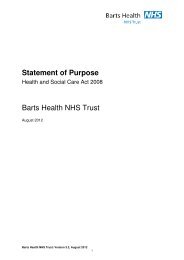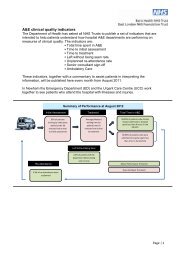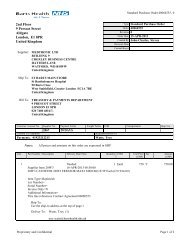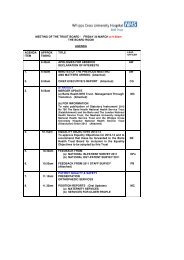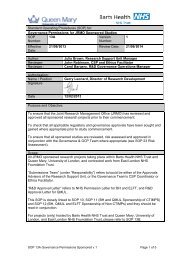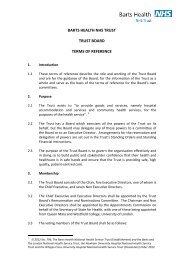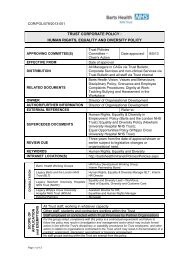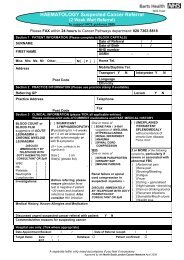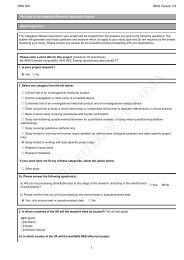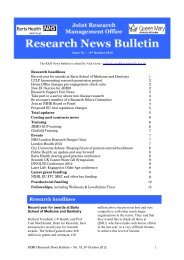Barts Health Equality and Human Rights Impact Assessment Report
Barts Health Equality and Human Rights Impact Assessment Report
Barts Health Equality and Human Rights Impact Assessment Report
- No tags were found...
You also want an ePaper? Increase the reach of your titles
YUMPU automatically turns print PDFs into web optimized ePapers that Google loves.
<strong>Barts</strong> <strong>Health</strong> <strong>Equality</strong> <strong>and</strong> <strong>Human</strong> <strong>Rights</strong> <strong>Impact</strong> <strong>Assessment</strong> <strong>Report</strong><strong>Barts</strong> <strong>and</strong> the London acknowledge the need to explore the opportunities available to olderemployees in light of the removal of the default retirement age 5 . The new, mergedorganisation may wish to explore how promotions are advertised <strong>and</strong> allocated.1.4.2 Methodological issues Increasing levels of disclosureCurrently all three Trusts have low levels of disclosure around disability, religion <strong>and</strong> belief,<strong>and</strong> sexual orientation. This is a complex issue which all the Trusts have committedthemselves to tackling. The new, merged organisation should be mindful of retainingknowledge about the particular reasons – perhaps connected to organisational culture –which explain why staff are reluctant to disclose information in this regard. That is to say, thework currently being undertaken by Trusts on this issue should not be lost.St<strong>and</strong>ardising categoriesAt the moment, Trusts use different groupings within particular categories, which makescomparison difficult. Most obviously, this is the case with reference to the ethnicitycategories used by Whipps Cross. Although basic demographic data is collected usingspecific categories, disaggregation on issues such as training provision <strong>and</strong> promotion isrestricted to broad categories. Similarly, the groupings used by Newham to categorisepeople’s ages do not allow comparison across the Trusts. The st<strong>and</strong>ardisation of categoriesmay simply be a procedural issue of deciding how to run information off the ESR. However,it may be useful to investigate what information is collected during, say, appraisals or oncegrievances have been raised.Addressing ‘gaps’ in monitoringIt is difficult to state with certainty all the types of information that the three Trusts monitor.This is for a number of reasons. Primarily, however, it is because the data that was providedwas, on the whole, taken from equality reports. This means the data had already beenanalysed by the Trusts <strong>and</strong> certain categories or issues filtered out. For example, <strong>Barts</strong> <strong>and</strong>the London clearly state in their equality report that information relating to training is notincluded given ‘wide variations between the numbers of attendees on…courses’. Equally,Newham have limited the inclusion of data to priority areas for their organisation. The factthat organisations have not presented data obviously does not mean they do not hold it.As part of the research process brap did give organisations an opportunity to provideadditional data. While this prompted a great deal of extra information, some of the Trustsexplained they would not be able to provide all the information that was requested within thetimescales dictated by the project. Again, then, ‘gaps’ in this report are not necessarily anindication that an organisation does not monitor a particular issue or characteristic. It will beimportant for the new merged organisation to confirm this in due course with relevant HRdepartments as they plan combined workforce equality monitoring protocols.5 <strong>Barts</strong> <strong>and</strong> the London (2012) Annual <strong>Equality</strong> <strong>Report</strong>25



